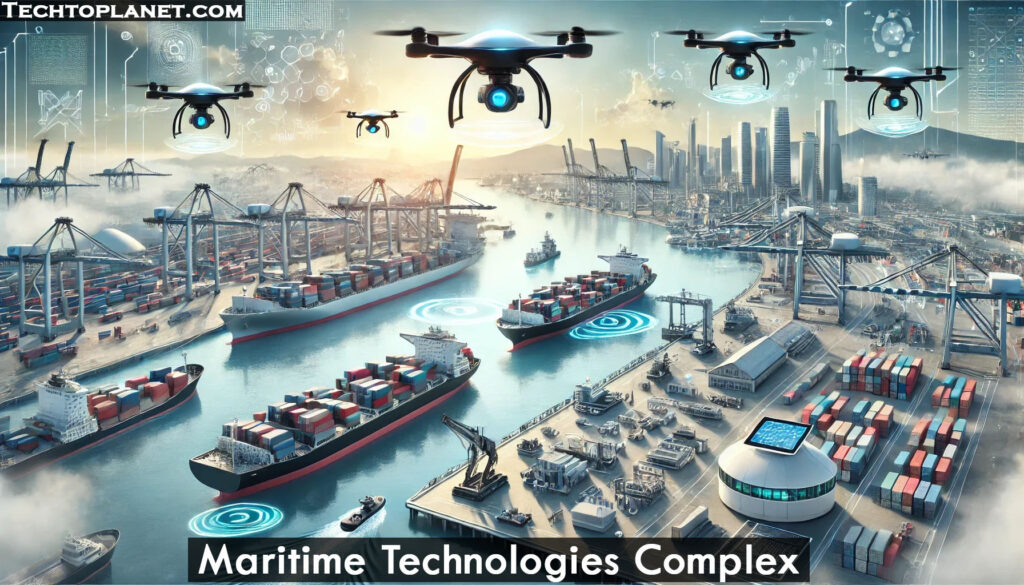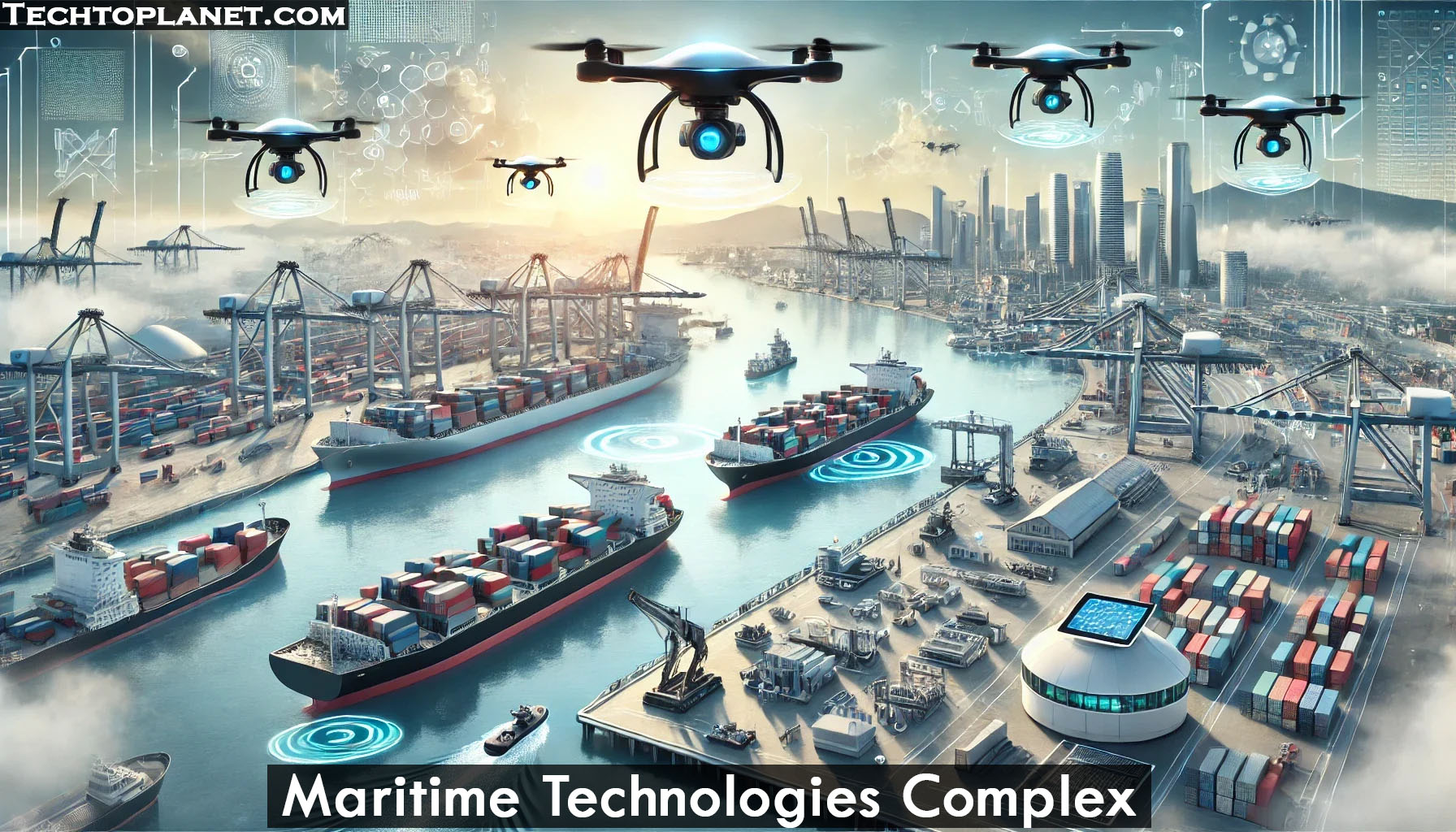Introduction
The Maritime Technologies Complex An Industry that is Complex and Continuing to Change industry is one of the most critical economic players globally, the bulk carrier and provider of about 80 percent of all the cargoes traded globally. But it is not only a transport of goods; it has become a technological giant overnight. Today, the technologies used are far more developed; it has been dealing with difficult issues and defining the future of navigation and cargo delivery, environmental conservation. This article takes more time to break down the various sub themes within this domain of technology focusing on what these technologies can be made of, how they can be utilized and obviously the challenges in this technology domain.
The Central Theme of Maritime Technologies
This is including; *Navigation and Communication Systems*
Satellite Navigation (GPS and GNSS)
In the current world use of Global Positioning System (GPS) and other Global Navigation Satellite Systems (GNSS) is relied on in the conduct of modern Maritime Technologies Complex navigation. These technologies afford more accurate positioning, helping ships chart their best course, avoid danger, and deliver their cargoes on time. Advanced satellite Navigation systems have brought a positive change in marine transport by less frequent accidents and less fuel consumption.
Automatic Identification Systems *
Another important application is AIS, another type of system used to improve the position awareness by relaying data of the vessel including position, speed, course, etc., to other ships and coast guard facilities. This enhances safe navigation and efficient management of traffic as far as traffic density on the high seas is concerned.
VHF Radio Communication
Even today’s Maritime Technologies Complex equipment VHF radio is one of the essential means of communication between ships and between ships and coastal stations. It is mandatory for any unexpected event to happen, to get updates on the weather and even for directions around the region.
Autonomous and Smart Ships
Autonomous Vessels Development
Smart ships are the future of the shipping business. These vessels are designed to be autonomous with the use of Artificial Intelligence (AI), and/or Machine Learning (ML). They rely on sensors, cameras and LiDAR to capture the environment and make decisions in a few minutes.
Benefits and Challenges
The areas under autonomous ships are the areas of safety, operation cost, and fuel consumption. Nevertheless, there are still obstacles, e.g. in matters of data protection, compliance with the existing law, or in a variety of situations needing reliable AI algorithms.
Green Maritime Technologies Complex
It also includes the final component which is the **Sustainable propulsion systems**
Alternative Fuels
Concerning environmental concerns, the industry is focusing on new fuel feed stocks that include LNG, hydrogen, ammonia, and biofuels. They emit less greenhouse gases and are therefore legal regarding environmental standards.
Electrification and Hybrid Systems
Electric drives including partly diesel-electric drive systems are increasingly being applied. These technologies are said to reduce emissions and increase energy efficiency.
Wind-Assisted Technologies
Technologies such as rotor sails as well as kite systems are again being adopted, in order to harness the power of the wind in an attempt to cut down consumption of fuel. Such technologies are more useful in lowering emission levels on longer distance journeys.
They also include **Emission Monitoring and Reduction
Scrubbers and Catalytic converters & Scrubbers and Catalytic Converters
Places also called scrubbers assist the vessels to reduce emission of sulfur oxides (SOx) in compliance with International Maritime Technologies Complex Organization (IMO) Standards. In the same manner, emission control standards are met through control of nitrogen oxides (NOx) by the means of catalytic converters.
Carbon Capture and Storage (CCS)
Newer technologies in CCS consider capturing CO2 from the exhaust systems of ships. This captured carbon can be stored or used in other industrial processes to make a positive contribution towards reducing the negative impact of carbon footprint associated with shipping and hence carbon neutral shipping.
Digitalisation in shipping business

Port Automation
Automating Ports and IoT Connection
To increase efficiency, these smart ports are now using IoT devices and automation in their new designs. Temperature and other conditions of the cargo are carefully supervised with the help of sensors, cranes are equipped with automatons to work quicker on loading and on the unloading of the cargo also, and blockchain technology to guarantee secure and reliable transactions.
Digital Twin Technology
Digital twins: Areas of application of virtual copies of physical stocks having a view in terms of optimizing the activities of the ports. They enable the operators to model operations under varied circumstances, anticipate when their equipment will require service and generally improve usability.
Predictive Maintenance
Big Data and Analytics in Organisation
Big data analysis in real time monitors the condition of the equipment in the organization for predictive maintenance purposes. Scheduling maintenance before the usual problems emerge allows the firm to reduce the time it takes to fix a particular equipment as well as the overall repair expenses.
condition monitoring systems
Temperature, pressure, and vibration data are captured from important parts of the vehicle including engines and propellers. This information helps to predict and thus prevent malfunctions which would otherwise affect the continuation of operations.
Problems Of Apprehended Maritime Technologies
Regulatory constraints and legal issues
Fragmented Regulations
Maritime Technologies Complex business is a global one and the availability and usage of seaborne transportation are dictated by regional laws. These trends raise issues about how new technologies can be standardized and made compliant.
There are issues of liability and insurance that are raised during the process of obtaining an SBA loan or grant by an eligible small business.
There are times when fully automated ships may pose important issues pertaining liability in case of an accident. In the case of liability, there is a clear dilemma of who is to blame – the AI developer, shipowner or operator? It has remained more of a legal question that has not been fully resolved.
High Costs and ROI Concerns
This standard illustrates the initial investment requirements that need to be made to initiate practicing as a Physician or Surgeon.
Advanced Maritime Technologies Complex as tools for development and deployment demand a huge investment. Smaller deeper players can ill-afford such investments often without clear and near-term returns that can accrue from such developmental networks.
Adoption Barriers
Lack of, or resistance to change, low technical experience, and problems that arise in relation to migration makes it difficult to adopt.
Cybersecurity Risks
Flaws and Weaknesses of Digital Systems
This is particularly so due to the fact that as dealings with the sea and the surrounding environment get more digitized, then they are open to cyber risk. The hackers can attack navigation systems, communication systems or data related to cargo which leads to dysfunction and produce financial losses.
Enhancing Cyber Security
The industry is implementing and focusing on strong protective actions such as a firewall, encryption, and security scans. The risks are also actionable, though: maintaining proper cyber hygiene requires educating one’s employees.
Search for : The Future of Maritime Technologies
Trends Shaping the Industry
As subgroup we have chosen **Artificial Intelligence & Machine Learning.
AI and ML play a vital part in making the future maritime environment even more effective with aspects such as route scheduling, predictive analysis. It suggests that these technologies will help increase efficiency and expunge innovation from the manufacturing industry.
Integration of renewable energy resources is one of the simplest solutions that could solve most of the engineering challenges being faced.
As people’s apportions go towards green energy, the shipping sector is considering other possibilities like solar-propelled ships and fuel cells to cut down its emissions even more.
Assessing the aspects of Collaboration and Innovation
This effort is being driven through a mutually beneficial symbiosis between shipping companies that operate some of the largest global fleets, technology suppliers who can help these companies optimize operations, and regulators who are responsible for safety and environmental standards. Programs such as cooperation in research and development projects and common technologies are bringing about rapid integration of innovative m-learning solutions.
Conclusion
More specifically, specific areas of concern within the shipping industry are now being addressed using advances in Maritime Technologies Complex. These are some of the ways that are revolutionizing the global maritime industry today: autonomous ships, anti-fouling coatings and paints, and new fuels, smart ports and terminals, fleet management and smart maintenance. Nonetheless, the road map is not devoid of challenges such as, expensive, bureaucratic, and insecure. They hold that true maritime development may be achieved by innovation and collaboration to enable the industry to diversify and add value in the increasingly complex global economy.

